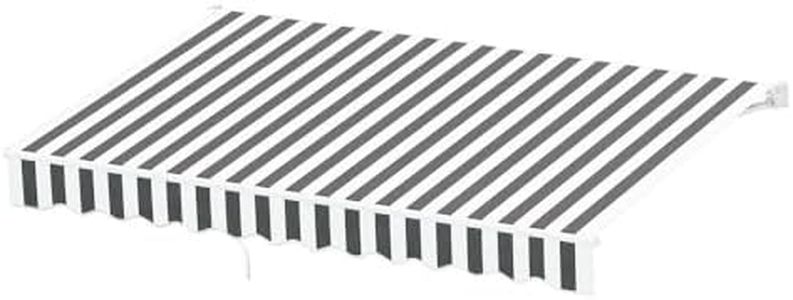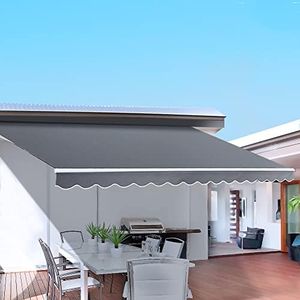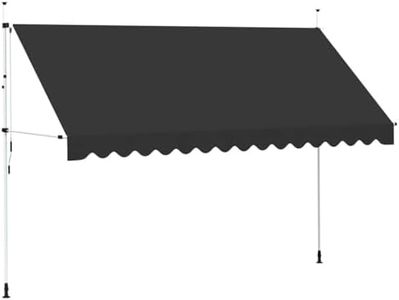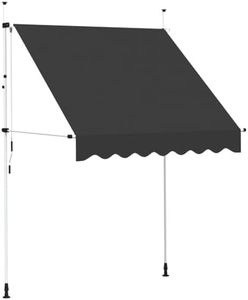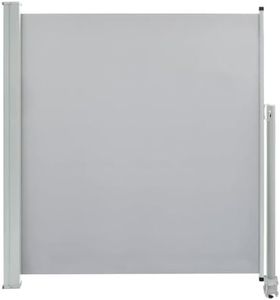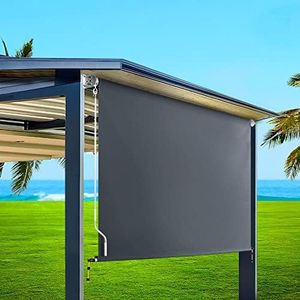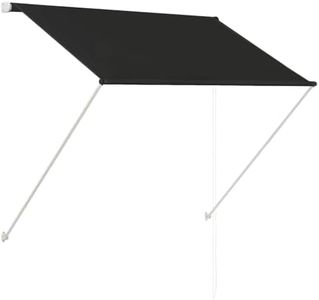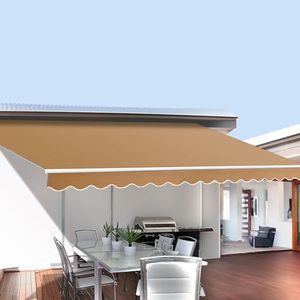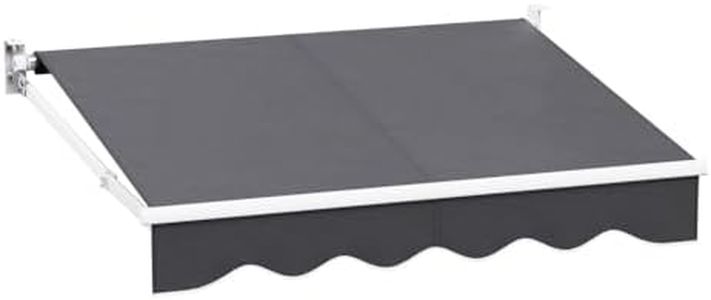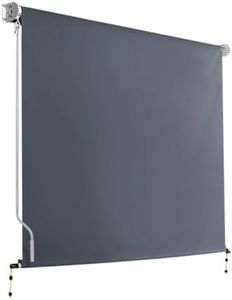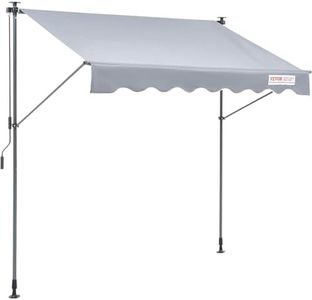We Use CookiesWe use cookies to enhance the security, performance,
functionality and for analytical and promotional activities. By continuing to browse this site you
are agreeing to our privacy policy
10 Best Retractable Awnings
From leading brands and best sellers available on the web.By clicking on a link to a third party's website, log data is shared with that third party.
Buying Guide for the Best Retractable Awnings
Retractable awnings are a great way to create comfortable shade and protect your outdoor spaces from sun and rain. Choosing the right retractable awning can enhance your patio, deck, or balcony's usability while matching your home's style. It's important to look for features that fit your space, climate, and how much maintenance you're willing to do. Thinking about how you'll use the awning – whether for occasional shade, rain protection, or creating a true outdoor room – will help narrow down your choices.Size (Width and Projection)The size of the awning refers to its width (how far along the wall it stretches) and its projection (how far it extends out from the wall). This is important because an awning that's too small won't give you enough shade, while one that's too big can overwhelm your space or even be difficult to fit. Generally, awnings come in small (up to 8 feet wide), medium (8 to 15 feet wide), and large (over 15 feet wide) sizes, with projections often ranging from 5 to 13 feet. To pick the right size, measure your outdoor space and consider the area you want to cover. It's also helpful to think about the path of the sun during the day to ensure your awning will provide shade when and where you need it most.
Operating Mechanism (Manual vs. Motorized)The operating mechanism determines how you extend and retract your awning. Manual awnings use a hand crank, while motorized awnings operate with a remote control or switch. Manual systems are simpler and require no electricity, making them ideal for smaller setups or places without power access. Motorized options provide convenience—especially for large or hard-to-reach awnings—and can often be outfitted with sensors or timers. If you have mobility concerns, a large awning, or prioritize ease of use, a motorized awning might be best. Otherwise, a manual system will work just fine for straightforward, occasional use.
Fabric MaterialThe fabric of your awning determines how well it stands up to sun, rain, wind, and fading. Common materials include polyester, acrylic, and solution-dyed fabrics. Polyester is budget-friendly and water-resistant, but may not last as long outdoors. Acrylic offers strong sun and fade resistance, making it suitable for sunny locations, while solution-dyed fabrics are even more durable and colorfast, often lasting the longest. For someone who wants a long-lasting investment and the lowest maintenance, look for solution-dyed or high-quality acrylic fabrics, especially if the area gets intense sun or frequent rain. If the awning will be used more occasionally or in milder climates, a polyester fabric may suffice.
Frame MaterialThe frame is what supports the fabric and moves the awning. Typically, frames are made from aluminum, steel, or a combination. Aluminum is lightweight, rust-resistant, and easy to maintain, making it a popular choice for most homeowners. Steel is stronger and can support larger awnings but is heavier and requires protective coatings to prevent rust. If you live in a very rainy or coastal area, aluminum is often preferred for its resistance to corrosion. For larger or commercial installations where strength is a priority, steel might be better, but make sure it’s coated or treated for outdoor use.
Weather ResistanceWeather resistance covers how well the awning holds up against sun, rain, wind, and sometimes snow. Some awnings are suitable for sun protection only, while others are designed to withstand regular rain and moderate windy conditions. Look for information on UV resistance, water repellency, and wind ratings. If you live in an area with strong winds or storms, opt for an awning rated for higher wind speeds and with reinforced arms. If you only need occasional sun protection in a mild climate, a less heavy-duty model will do.
Adjustability and AngleSome awnings allow you to adjust the angle or pitch to better block the sun as it moves or to let rainwater runoff easily. Fixed-angle awnings are more basic, while adjustable models provide enhanced flexibility. If your outdoor area faces the direction of the sun for most of the day, or if you want to use the awning during light rain, being able to change the angle can be very helpful. For users looking for hands-off shade or who don’t need rain protection, a fixed angle might be sufficient.
Installation RequirementsInstallation requirements cover both the difficulty of assembly and the type of wall or structure the awning can be attached to. Some awnings are designed for DIY installation, while others may require professional mounting, especially larger or motorized models. Factors like available wall space, wall material (wood, brick, concrete), and roof overhangs matter here. If you're comfortable with basic tools and measurements, a smaller manual awning might be manageable to install on your own. For tricky setups or larger installations, it's best to check for professional help or ensure the mounting hardware is appropriate for your wall type.


